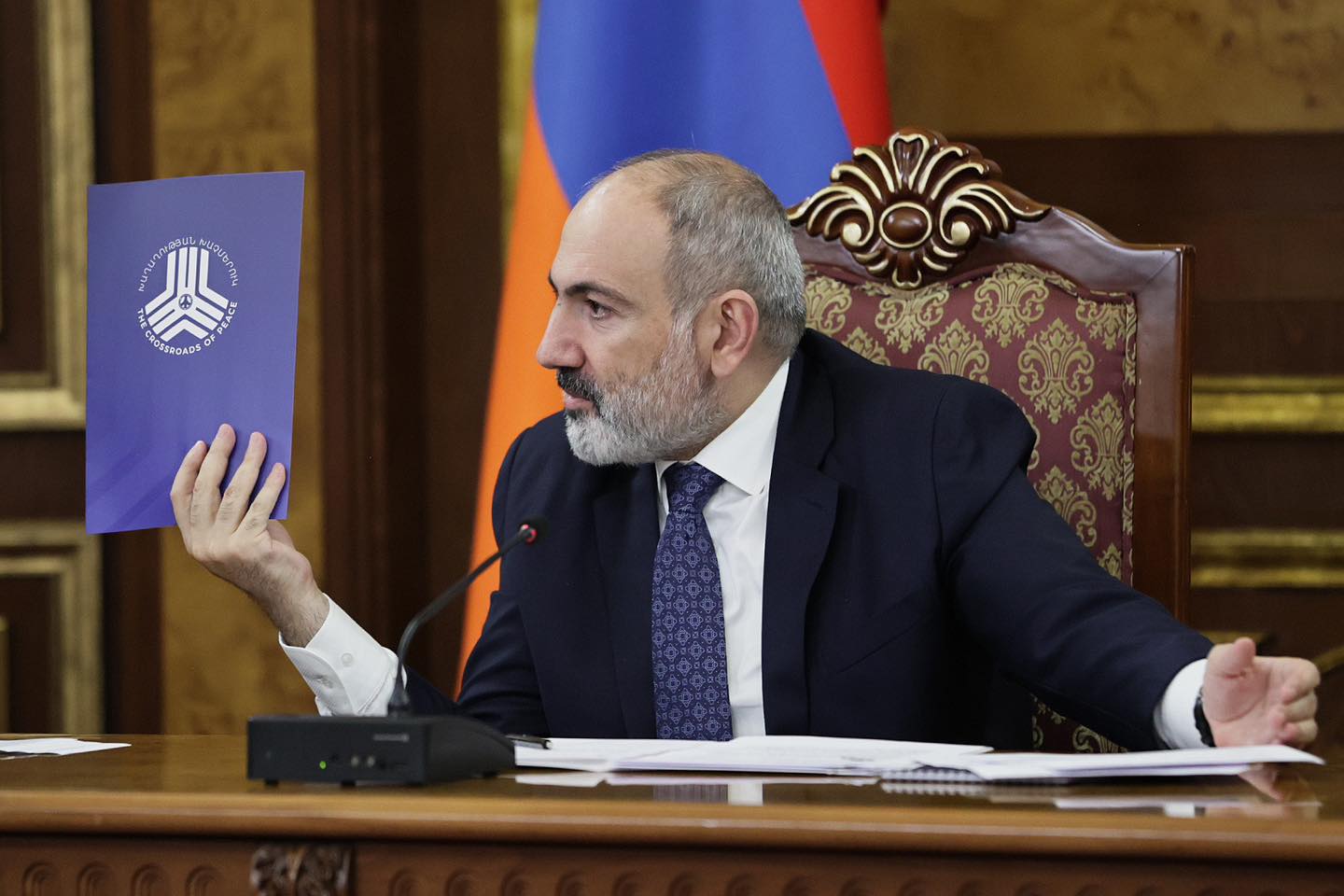
Armenian Prime Minister Nikol Pashinyan frequently makes public speeches full of unaddressed criticism and accusations. He often uses expressions such as “certain circles,” “unknown,” or “known,” “internal” or “external forces,” “geopolitical centers,” and others that create ambiguity. This ambiguity provides fertile ground for conspiracy theories to flourish. Pashinyan tends to take any current or historical event and explain it as a result of a covert plan without mentioning the names of the supposed “conspirators.” This approach makes it difficult to verify his claims.
In his recent press conference, the Prime Minister attributed the depopulation of Nagorno Karabakh to “external forces.” He claimed that these forces were intended to initiate a change of power in Armenia and bring the resources of Karabakh to Armenia at any cost. Pashinyan claimed that these same forces were planning to resolve the issue of Armenia in 2023, similar to how they handled the Karabakh issue.
During his speech on April 10, the Prime Minister presented the results of the government’s plan for 2023 in the National Assembly and answered questions from the deputies. However, the speech contained numerous irrelevant and unsubstantiated claims.
Media.am has singled out the similar statements made by Pashinyan during his 2.5-hour speech.
Geopolitical Adversaries and Armenia’s independence
“Certain states have used the Nagorno-Karabakh issue to put a rope of constraints around the neck of the Republic of Armenia. They have imposed restrictions on Armenia’s actions, preventing the country from acting as a fully independent sovereign state. The negotiation opportunities available since 2016 were not aimed at solving the Nagorno-Karabakh issue but focused on easing the constraints imposed on Armenia. However, these attempts have not been successful. As a result, it was decided to resolve the issue through military means, leading to the 44-day war.”
Forces that pushed us toward military action
“The next attempt to nullify and eliminate the statehood of Armenia took place on May 12, 2021, just two days after the National Assembly of the Republic of Armenia was dissolved, the government resigned in order to hold early elections in the country, and the armed forces of Azerbaijan invaded the sovereign territory of the Republic of Armenia in the Sotk-Khoznavar sector.
At that time, there were forces that demanded us to start military operations so that, as they said, the CSTO would come to our aid. According to their logic, the CSTO could not do such a thing without military operations, although the CSTO’s de jure obligations indicated something completely different.”
Conspiracy to make Armenia a liquidation commission
“What happened in Nagorno Karabakh was not really about Nagorno Karabakh, but another conspiracy to bring Armenia’s statehood to its knees. It was an attempt to bring to end the plan that still remained incomplete after November 2020, February 2021, May 2021, September 2022, the goals of which were very specific: dragging Armenia into war, creating internal political chaos in Yerevan, overthrowing the legitimate government and establishing a puppet government, essentially a liquidation commission of the Republic of Armenia. But this time it didn’t work out again and it didn’t work out for several reasons.”
Seemingly existing evidence
“Now we have data; I think we also have evidence that a certain circle, a group of representatives of Nagorno-Karabakh, however, during many discussions in Nagorno-Karabakh, it was presented that if we continue following this path, this will happen, this will happen, this will happen. That circle mentioned did not respond and did not speak about their plan. Today, we have materials that also unveil their plan: “Well, if it doesn’t happen here, we will go to Armenia and take power; what’s the problem?”
Of course, one can make assumptions about the subject of Nikol Pashinyan’s speech, but the use of ambiguous terminology allows for multiple interpretations of his words. Additionally, these claims cannot be verified or refuted, as the author can simply argue that he meant something completely different, such as a different person or a different “geopolitical center”.
Many of these claims are examples of conspiracy theories, in which the cause of a phenomenon or event is explained simplistically by blaming some “malevolent” group of people. Pashinyan generalizes and connects the information, creating a logical cause-and-effect relationship at first glance. Therefore, To the audience, it may seem that everything is interconnected and has its cause and culprit.
The views expressed in the column are those of the author's and do not necessarily reflect the views of Media.am.


Add new comment
Comments by Media.am readers become public after moderation. We urge our readers not to leave anonymous comments. It’s always nice to know with whom one is speaking.
We do not publish comments that contain profanities, non-normative lexicon, personal attacks or threats. We do not publish comments that spread hate.